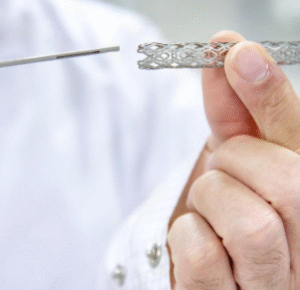Rhinoplasty surgery is a procedure designed to reshape the nose for either cosmetic or medical reasons. Commonly known as a “nose job,” it is a surgical process that can enhance the appearance of the nose, improve breathing, or correct structural defects. It has gained popularity due to its dual functionality, offering both aesthetic improvement and functional benefits for people facing breathing issues or trauma-related deformities.
What Is Rhinoplasty Surgery?
At its core, rhinoplasty surgery is a surgical intervention aimed at reshaping the nose by altering its bone, cartilage, or skin. It can make the nose smaller, larger, change the angle, or correct irregularities. This surgery can also repair nasal deformities from birth defects, trauma, or past surgeries. It is versatile enough to treat both internal functional issues and external aesthetic concerns.
Types of Rhinoplasty Procedures
There are two main types of rhinoplasty surgery: open and closed rhinoplasty.
- Open Rhinoplasty: This approach involves making an incision along the columella, the soft tissue between the nostrils. It offers the surgeon more visibility and access to the internal structure of the nose, making it ideal for more complex cases.
- Closed Rhinoplasty: In this method, all the incisions are hidden inside the nose, resulting in no visible scars. It is typically used for less complicated procedures that don’t require significant changes.
Cosmetic vs. Functional Rhinoplasty
Rhinoplasty is often categorized as cosmetic or functional.
- Cosmetic Rhinoplasty: This procedure focuses on improving the appearance of the nose. Patients seek cosmetic rhinoplasty for various reasons, such as altering the size of their nose, reshaping the nostrils, or correcting asymmetry.
- Functional Rhinoplasty: This is done to correct breathing problems or structural defects. Common functional rhinoplasties include septoplasty, which corrects a deviated septum, allowing for improved airflow and better breathing.
Why Do People Choose Rhinoplasty Surgery?
People opt for rhinoplasty surgery for a variety of reasons, including aesthetic preferences, health concerns, or the need for reconstructive surgery following an injury. Here are a few common reasons:
- Aesthetic Improvement: Rhinoplasty allows individuals to reshape their nose to better match their facial features, enhancing overall appearance and boosting self-esteem.
- Correction of Birth Defects: Some individuals are born with nasal deformities that impact breathing and appearance. Rhinoplasty can correct these defects.
- Post-Trauma Reconstructive Surgery: After a facial injury or accident, the structure of the nose may become distorted. Rhinoplasty can restore its natural shape.
- Breathing Problems: Functional rhinoplasty helps individuals suffering from nasal blockages, often caused by a deviated septum or other internal nasal structure issues.
Ideal Candidates for Rhinoplasty Surgery
Not everyone is an ideal candidate for rhinoplasty surgery. Candidates should be in good overall health, both physically and mentally, with realistic expectations about the results. Some factors that can indicate suitability include:
- Being physically healthy and non-smokers, as smoking can impede the healing process.
- Having completed facial growth, which usually occurs by the late teens. This ensures the nose has fully developed and won’t change post-surgery.
- Suffering from aesthetic concerns or functional issues that significantly affect confidence or quality of life.
The Rhinoplasty Procedure
The procedure itself is typically performed under general anesthesia, depending on the complexity. Here’s a breakdown of the surgical process:
- Anesthesia: The first step is administering anesthesia to ensure the patient’s comfort. This can involve local anesthesia with sedation or general anesthesia, depending on the surgeon’s recommendation.
- Incision: Depending on whether it’s an open or closed rhinoplasty, the surgeon will make the necessary incisions either across the columella or inside the nostrils.
- Reshaping the Nose: The surgeon will carefully reshape the nose’s bone and cartilage to achieve the desired appearance or function. If additional cartilage is needed, it can be taken from the ear or another part of the body.
- Correcting Deformities: If the patient has a deviated septum or other structural problems, these will be corrected at this stage to improve breathing.
- Closing the Incisions: Once the reshaping is complete, the surgeon will close the incisions. For open rhinoplasty, the external stitches will be carefully hidden along the natural contours of the nose.
- Recovery: A splint is placed on the outside of the nose to support and protect it as it heals.
Recovery and Aftercare
After rhinoplasty surgery, recovery is crucial for proper healing. The initial recovery phase typically lasts one to two weeks. During this time, patients may experience swelling, bruising, and discomfort, especially around the eyes and nose. Here are some important aspects of post-surgery care:
- Keep the head elevated: Elevating the head, especially when sleeping, helps reduce swelling and promotes faster healing.
- Avoid physical exertion: Patients should refrain from strenuous activities for at least a month to prevent complications.
- Attend follow-up appointments: Regular check-ups with the surgeon ensure that the healing process is progressing smoothly and any concerns are addressed.
Most of the swelling will subside within a few weeks, but full results from the surgery may not be visible for up to a year, as the tissues take time to settle completely.
Risks and Complications
Like any surgery, rhinoplasty surgery carries some risks. While most people have successful outcomes, potential complications include:
- Bleeding or infection
- Scarring
- Difficulty breathing through the nose
- Unsatisfactory results that may require revision surgery
To minimize risks, it’s essential to choose an experienced, Hair transplant cost in bangalore board-certified surgeon and follow all pre- and post-operative instructions carefully.
Choosing the Right Surgeon
Choosing the right surgeon is one of the most critical decisions in the rhinoplasty journey. Look for a board-certified plastic surgeon with extensive experience in facial surgeries, particularly rhinoplasty. Personal referrals, reading reviews, and consulting with multiple surgeons can help ensure you find the right fit for your needs and goals.
Conclusion
Rhinoplasty surgery offers a transformative solution for individuals seeking to improve the appearance of their nose or address functional breathing problems. Whether for aesthetic reasons or health concerns, this surgery can provide a significant boost to one’s confidence and quality of life. However, it’s important to have realistic expectations, understand the recovery process, and choose a skilled surgeon to achieve the best results.




